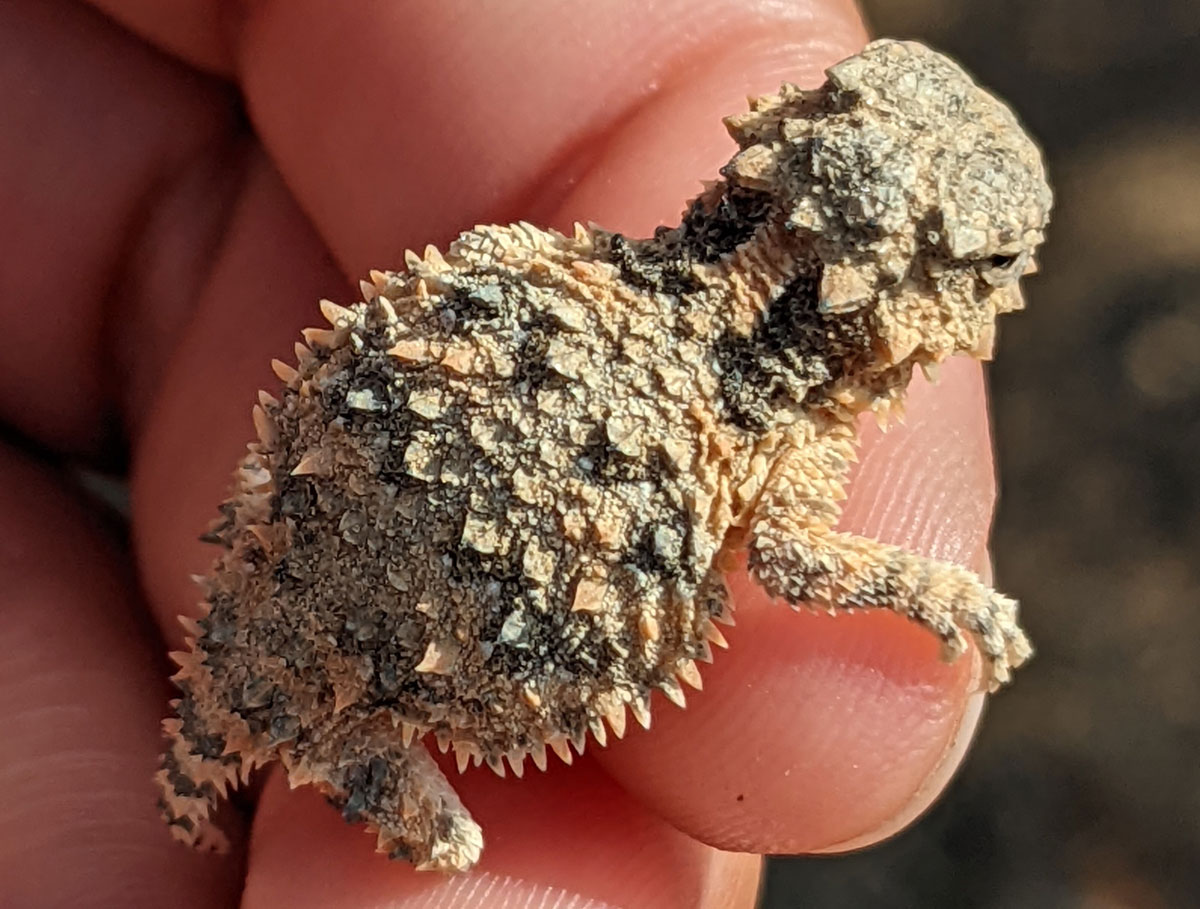By Jamison Laura
Nestled across the Escondido Creek Conservancy and the Escondido Creek Watershed is one adorable reptile many hikers have come across, the Blainville’s Horned Lizard.
The flat-bodied lizard has an oval body and is between 2.5- and 4.5-inches long. Females are larger than males, and September is the end of the breeding season as females lay between six to 21 eggs, which hatch between August and September.
The horned lizard is very delicate, so it’s important to remember when you come across them in the Escondido Creek Conservancy, or elsewhere, not to touch them. Only a wildlife biologist or professional should handle these beautiful creatures.
Historically, they are found in California along the Pacific coast from the Baja California border west of the deserts and the Sierra Nevada, north to the Bay Area, and inland as far north as Shasta Reservoir, and south into Baja California. Ranges up onto the Kern Plateau east of the crest of the Sierra Nevada. The range has now been severely fragmented due to land alteration.
Horned lizards are diurnal, meaning they are active during periods of warm weather, retreating underground and becoming inactive during extended periods of low temperatures or extreme heat.

Horned lizards roam a home range, which may overlap with others and change seasonally, but male horned lizards do not defend their territory aggressively like other lizard species. They don’t have patches of brighly-colored scales to display to other males.
Because they don’t combat other males during the breeding season, their bodies are smaller than the bodies of female horned lizards, which lets them use their energy in searching for females instead of maintaining a large body size.
The lizards also have a unique defense mechanism when they can’t outrun predators — squirting blood from the corner of their eyes. The Blainville’s blood has been found to repel coyotes and foxes and possibly other predators.
Typically, when threatened the lizard is capable of quickly running away over a short distance, and usually runs under a low bush. Its main defense is remaining motionless using its cryptic coloring to blend into the background and make it difficult to see.
The lizard will crouch down low to prevent shadows that could make it easier to see, sit still to avoid detection, even changing its color slightly to better match the background, and will sometimes shake the body from side to side to partially bury itself in loose soil.
If in a real tight spot, the lizard will Inflate with air when threatened, making it larger and hard to swallow. They will open their mouths and make hissing noises as a threat display. When threatened and grabbed, it will bite and move the head from side to side to jab with its horns.
And while the lizard has some amazing defense mechanisms, they don’t have one from habitat loss and a reduction in their food supply. The lizards feast on native ants, but the invasive Argentine ants are one reason the lizard has lost more than 35% of its historic range.
Jamison Lauria is a Preserve Manager for the Escondido Creek Conservancy and is leading a small coast sage scrub and riparian expansion at Quarry Preserve.




